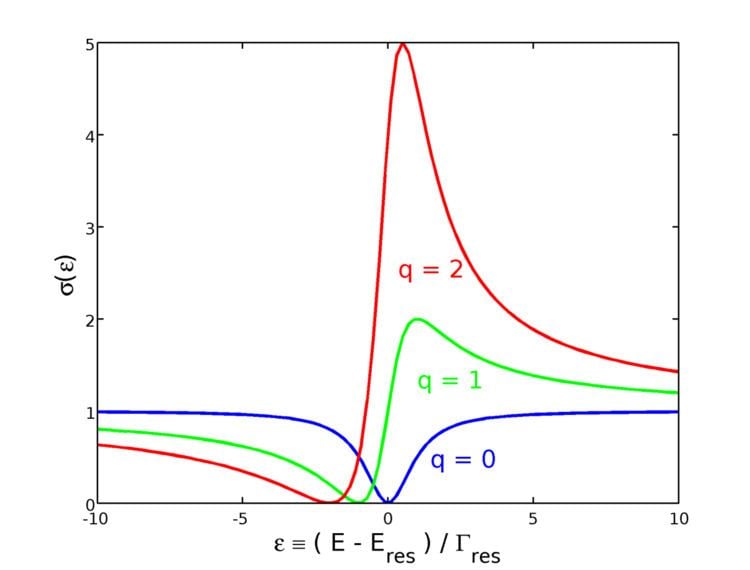 | ||
In physics, a Fano resonance is a type of resonant scattering phenomenon that gives rise to an asymmetric line-shape. Interference between a background and a resonant scattering process produces the asymmetric line-shape. It is named after Italian-American physicist Ugo Fano, who gave a theoretical explanation for the scattering line-shape of inelastic scattering of electrons from helium; however, Ettore Majorana was the first to discover this phenomenon. Because it is a general wave phenomenon, examples can be found across many areas of physics and engineering.
Contents
History
The explanation of the Fano line-shape first appeared in the context of inelastic electron scattering by helium and autoionization. The incident electron doubly excites the atom to the
Explanation
The Fano resonance line-shape is due to interference between two scattering amplitudes, one due to scattering within a continuum of states (the background process) and the second due to an excitation of a discrete state (the resonant process). The energy of the resonant state must lie in the energy range of the continuum (background) states for the effect to occur. Near the resonant energy, the background scattering amplitude typically varies slowly with energy while the resonant scattering amplitude changes both in magnitude and phase quickly. It is this variation that creates the asymmetric profile.
For energies far from the resonant energy the background scattering process dominates. Within
Fano showed that the total scattering cross-section
where
Examples
Examples of Fano resonances can be found in atomic physics, nuclear physics, condensed matter physics, circuits, microwave engineering, nonlinear optics and nanophotonics.
